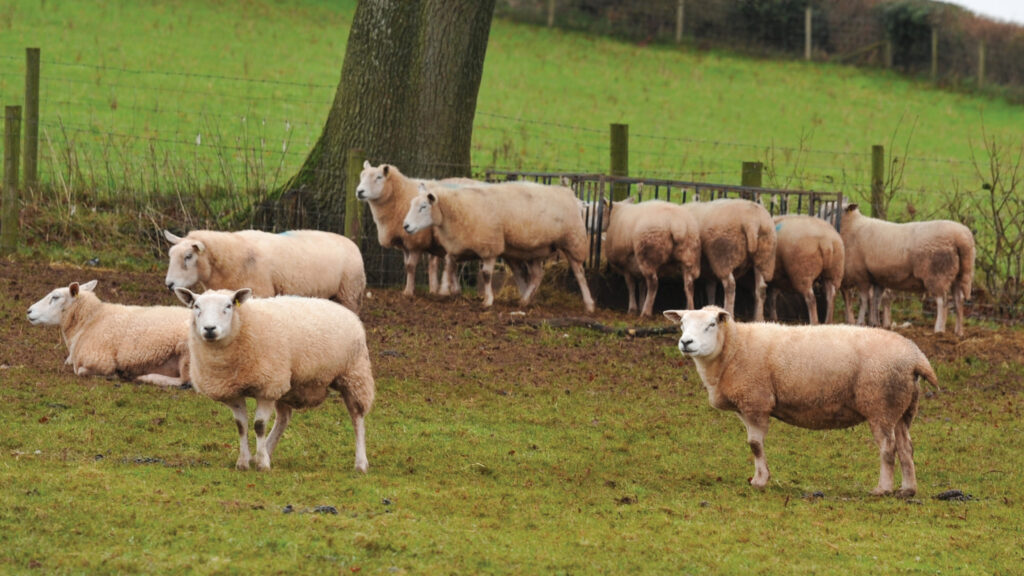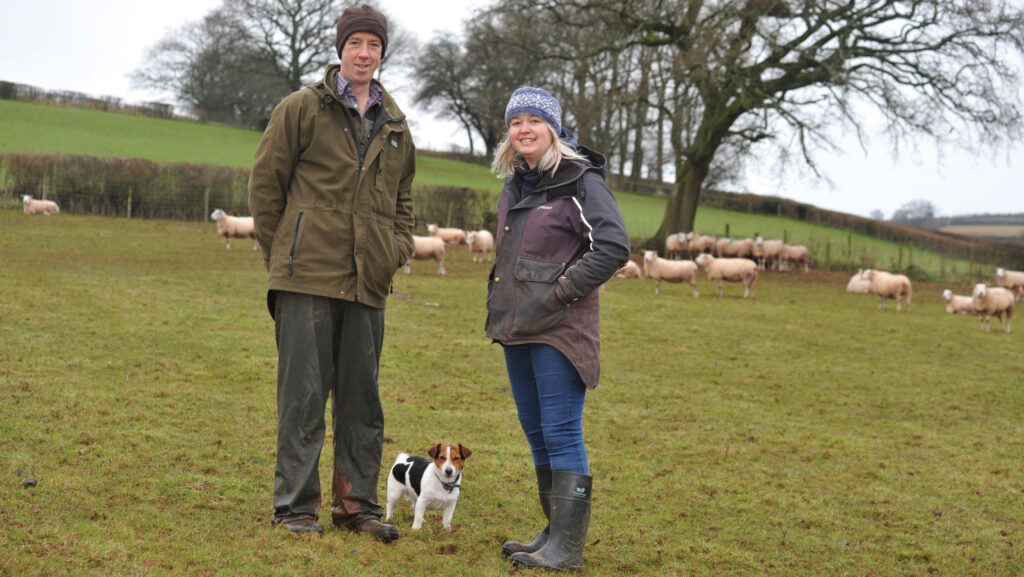Flock health and farm cost benefits from mineral auditing
 Roger and Dyddanwy's flock © Debbie James
Roger and Dyddanwy's flock © Debbie James Applying fertiliser enriched with sulphur can improve grass yields, but a project in Wales has demonstrated why farmers should monitor impacts on their livestock or risk poor performance.
Roger and Dyddanwy Pugh run a flock of Texel-cross ewes at Crickie Farm near Brecon.
When their 2023-born animals were slow to finish, they investigated possible issues as part of their project work in the Farming Connect Our Farms network.
See also: How cobalt deficiency tests led to higher lamb weights
Farm facts
- 98ha farmed – 94ha owned and 4ha rented
- 238m above sea level
- Loamy soils
- 300 breeding ewes
- Mid-March lambing
- Lambs sold liveweight and deadweight
- 60 Limousin and Aberdeen Angus-cross suckler cows
“The lambs looked great when we weaned them, but a month or two later they had high worm burdens and no real vigour,” Roger explains.
In early 2024, a farm mineral audit was undertaken and a forage mineral analysis revealed high levels of sulphur.
Historically, the Pughs had used a fertiliser enriched with sulphur to address deficiencies of this element in their grassland and it had improved grass yields and protein levels.

Roger and Dyddanwy Pugh © Debbie James
Across the UK, sulphur requirements of grass and crops used to be met largely by atmospheric deposition.
However, since industry cut emissions, that has no longer been the case and it has become more commonplace to use a fertiliser with added sulphur.
Independent ruminant mineral nutritionist Peter Bone is an adviser to the project at Crickie Farm.
He says that although sulphur is good for stimulating protein production in grass and other crops, when levels start to increase in forage it can become toxic.
Excess sulphur
Secondary effects in the animal are connected to the utilisation of selenium, and its ability to combine iron and molybdenum, which can result in issues with copper utilisation.
“When sulphur and molybdenum combine, thiomolybdate is formed, and this can lead to poor utilisation of energy, poor fertility and embryonic death,” says Peter.
It can also increase barren rates or extend the lambing period in adult ewes and animals breeding for the first time.
“Although sulphur is a key nutrient for soil and plants, too much of it can have adverse effects on livestock,” he warns.
Blood sampling at Crickie Farm showed a “clear marker” that molybdenum and sulphur were binding and entering the bloodstream.
However, any recommendations made to counter the molybdenum and sulphur in the blood of the ewes and lambs need “very careful consideration”, says Peter.
Mineral analysis
This is mainly because some breeds of sheep are susceptible to copper toxicity.
Timing in relation to the fertility cycle and end use of lambs also need to be considered.
This farm’s project has highlighted the importance of analysing the mineral status of grass and forages of all types, says Peter.
Livestock feed inputs, including water supply – particularly from private supplies – are also needed to establish deficiencies and excesses without solely relying on the results of just one of these tests.
“Some farmers are advised to take soil samples and try to relate the results to possible mineral issues in the animals, but in my view that should not be advised,” says Peter.
“Where we might see deficiencies or excesses in the soil, that might not be the case in the animal.
“Take cobalt, for instance: levels in soil are generally respectable, but could be low in the animal. What is right for the plant is not necessarily right for the animal.”
The Pughs will now revise their fertiliser strategy to reduce use of sulphur-enriched products.
They currently apply 50kg/ha of nitrogen (N) on their grazing leys and 75kg N/ha on silage ground.
“It grows a good crop of grass, it is a good fertiliser, but we will cut it down for a few years,” says Roger.
While it is good for grass, Peter says it is important to not overlook sulphur levels being eaten via the forage by livestock.
“There needs to be a holistic approach, to understand the possible outcomes for the soil, plant and the animal.’’
Supplementing feed
The work at Crickie Farm has also highlighted the value in supplementing an animal only with a mineral in which it is deficient, instead of using a combination product.
The easy answer is to feed a supplement, whereas it is important to first establish need, says Peter.
At different times, the Pughs have used boluses and mineral buckets and added mineral powder to feed, although they were not seeing great benefits from their investment.
After ruling out health issues and shortfalls in dry matter intake, a forage mineral analysis of standing crops and conserved feed was done.
The farm mineral audit then examined mineral levels in what the Pughs were buying in to establish if there were any gaps in the flock’s requirements.
The blood tests had shown selenium levels to be good but iodine very low. It was decided to give an injectable iodine supplement, and retesting three-and-a-half months later showed a gain.
“They had risen to normal levels,” says Roger.
Product choice
It can be challenging for farmers to know which products to use, with so few available that contain just one trace element, says Peter.
He points out that animals often need one element to be supplemented, not two.
“Cost is one issue with using a product that isn’t needed, but there can also be the risk of toxicity.
“For example, an animal might be iodine deficient, yet have too much selenium in its system, so there can be a risk from administering a combination product.
“This is why blood sampling is useful as it starts to build a picture and supplementation can, therefore, be more specific.”
